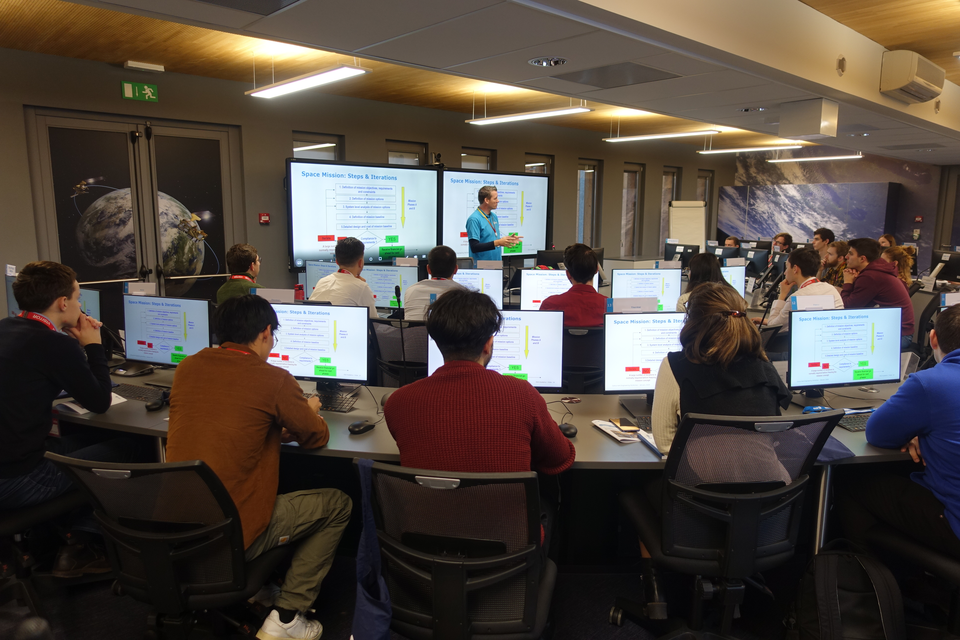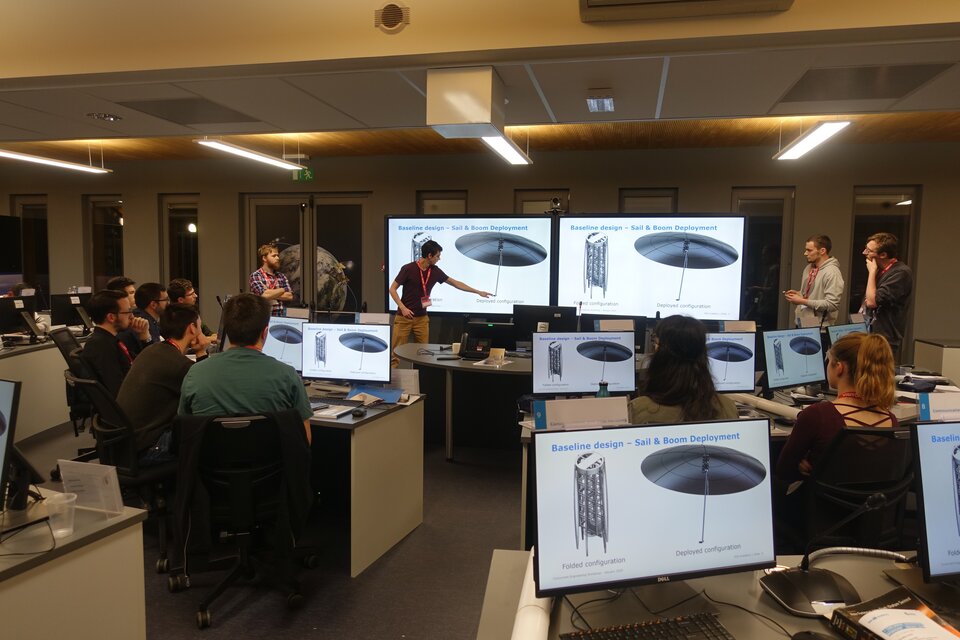Concurrent Engineering takes students to the edge of the Solar System
30 university students from 12 different ESA Member States and Canada have begun the new year in style by attending ESA Academy’s latest Concurrent Engineering Workshop. Held from 14 to 17 January 2020, the event took place at ESA Academy’s Training and Learning Facility, ESA-ESEC, Belgium -- which is also home to ESA’s educational Concurrent Design Facility (CDF). Providing tuition and technical expertise were two ESA Systems Engineers, supported by a National Trainee as a Systems Engineering Assistant, all from ESA’s Systems and Concurrent Engineering Section.
The workshop’s goal was to familiarise students with the Concurrent Engineering approach, and its many benefits for spacecraft design. Participants would also gain experience with the Open Concurrent Design Tool (OCDT) used in ESA’s CDF.

On the very first day, the students were given their challenge: use Concurrent Engineering to design a mission, called EDGE, to explore our Solar System’s heliopause – the limiting region where the Sun’s solar wind is dissipated by the interstellar medium. To make this ambitious task even more difficult, EDGE would need to be very low-cost, making CubeSat’s technology the practical choice. Could the students work together to complete their design in just four days?
A French student from Institut Polytechnique des Sciences Avancées explained, “It was amazing to share a few days with people with the same passion for space, because if you put them together you can only have an amazing result. It was perfectly balanced between working hard, being super focussed, having fun, improving technical skills, communication skills, working as a big team and celebrating all together.”
The participants got to work right away, splitting into different teams to cover the vital aspects:
- Configuration
- Structures
- Trajectory Analysis
- Propulsion
- Attitude and Orbit Control Subsystems (AOCS)
- Power
- Thermal
- Communications & Data Handling
- Optics & Sensors
The ESA Systems Engineers encouraged the students to create several iterations of their designs, with each one an improvement on the previous effort. Assessing the needs and functions of each team was an important early step, before proceeding to consolidate the overall design.
It did not take long before the scale of the task became apparent. Reaching the edge of the Solar System is hugely challenging, especially when restricted to only CubeSats! To tackle the volume and mass constraints while guaranteeing the scientific performance of the mission, they had to consider many different trajectories and system options, including electrical propulsion, gravity assists, a large deployable antenna and a solar reflector.

The students then continued with their refinements, carefully considering what needed extra attention, before the third and final iteration. This allowed further improvements and fine-tuning of all the sub-systems, enhancing the design toward an ultimate convergence of all of the components.
A German student from Darmstadt University of Technology was particularly impressed with what Concurrent Engineering makes possible. “Going from a state of ‘how could we ever hope to achieve this?’ to a concept that actually looks feasible in a matter of days, reiterating and planning together with all subsections present in one room, showed me what the Concurrent Engineering approach is capable of -- not just for the space sector, but for every early design phase of a project! I hope to apply it at a future workplace one day.”
To conclude the week, the students presented their results to the ESA experts. They detailed their final design, explaining the trade-offs they had to perform to obtain the best results, as well as proposing potential improvements and open tasks to still be performed. The experts were highly satisfied with the overall design and the results of each team! The students then received their certificate of participation. This document, along with the transcript of the workshop, will allow the participants to claim ECTS credit(s) from their university.
In addition to the workshop’s core challenge, participants also had the chance to play the EcoDesign game, learning about the environmental impacts of a space mission and lifecycle assessments of a satellite. A visit to ESEC-Redu and the PROBA Control Room was also organised, which was greatly enjoyed by all.
“It has been an incredible week,”declared an Italian student from the University of Bristol. “We had full immersion into the process that CDF engineers at ESTEC use every time they develop a space mission concept and assess its feasibility. And we got to use it for an extremely challenging mission. I had the time of my life and would definitely love to wake up every day to go to work if this was my job. This experience has enriched me so much, both professionally and personally. Thanks to everyone that made this possible.”
To find more information about upcoming ESA Academy training opportunities, please check the Current opportunities page.
Contact: tlp@esa.int















 Germany
Germany
 Austria
Austria
 Belgium
Belgium
 Denmark
Denmark
 Spain
Spain
 Estonia
Estonia
 Finland
Finland
 France
France
 Greece
Greece
 Hungary
Hungary
 Ireland
Ireland
 Italy
Italy
 Luxembourg
Luxembourg
 Norway
Norway
 The Netherlands
The Netherlands
 Poland
Poland
 Portugal
Portugal
 Czechia
Czechia
 Romania
Romania
 United Kingdom
United Kingdom
 Slovenia
Slovenia
 Sweden
Sweden
 Switzerland
Switzerland

























